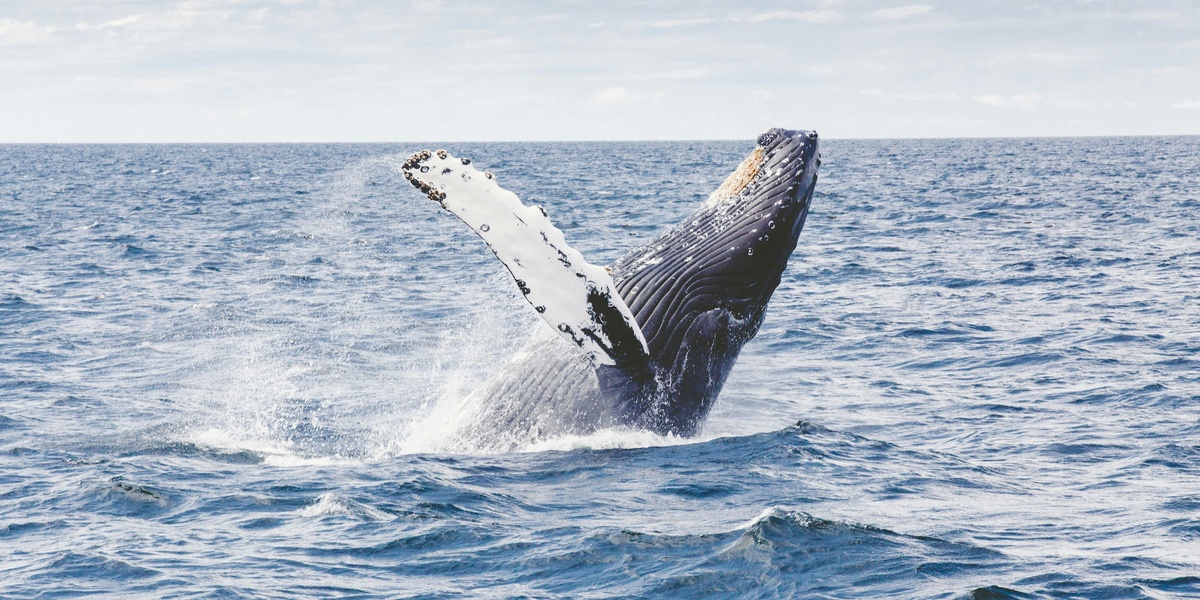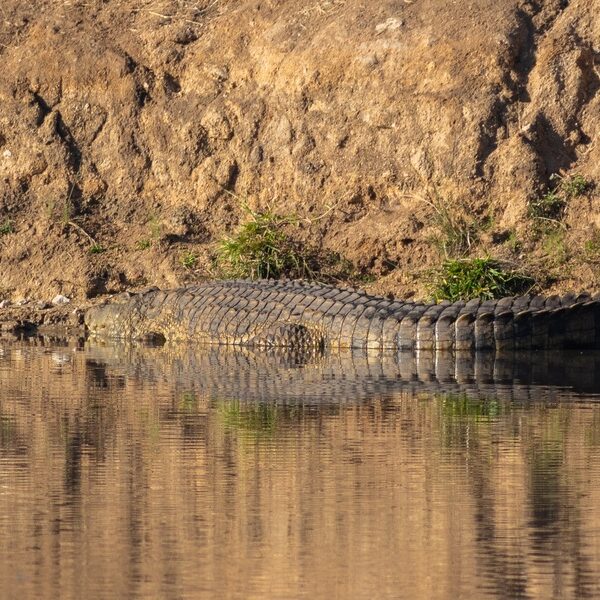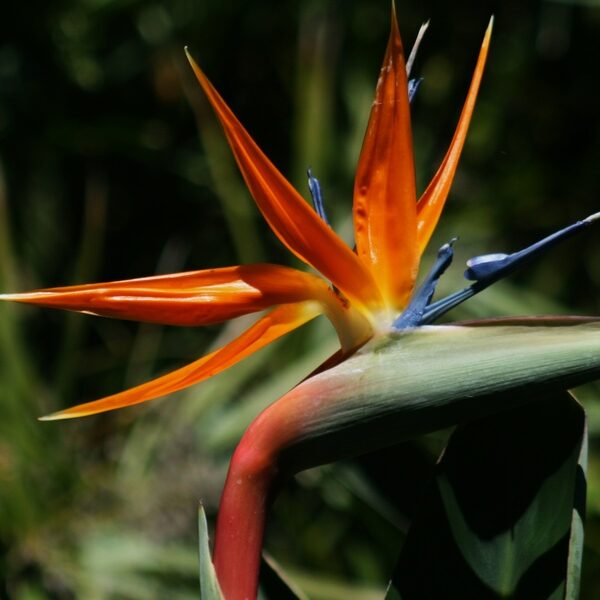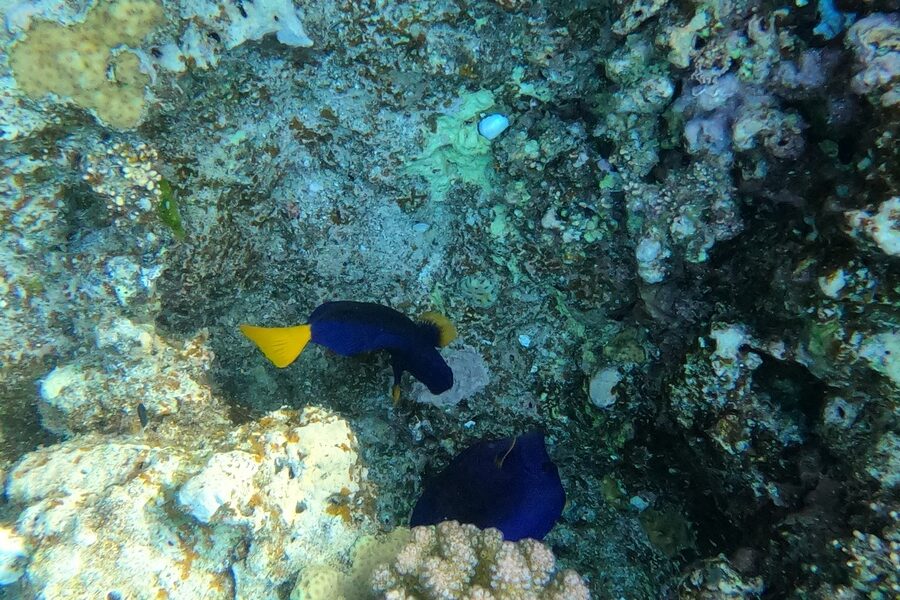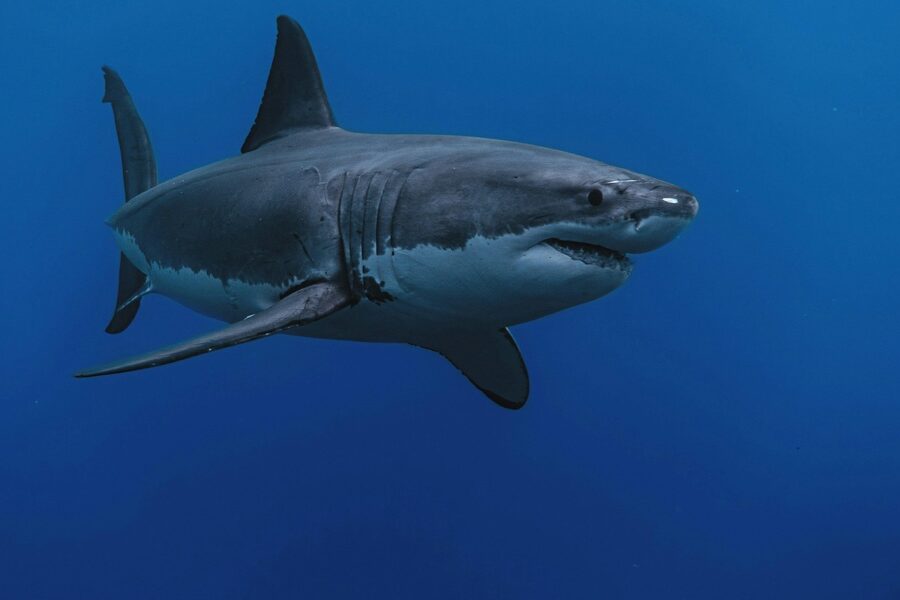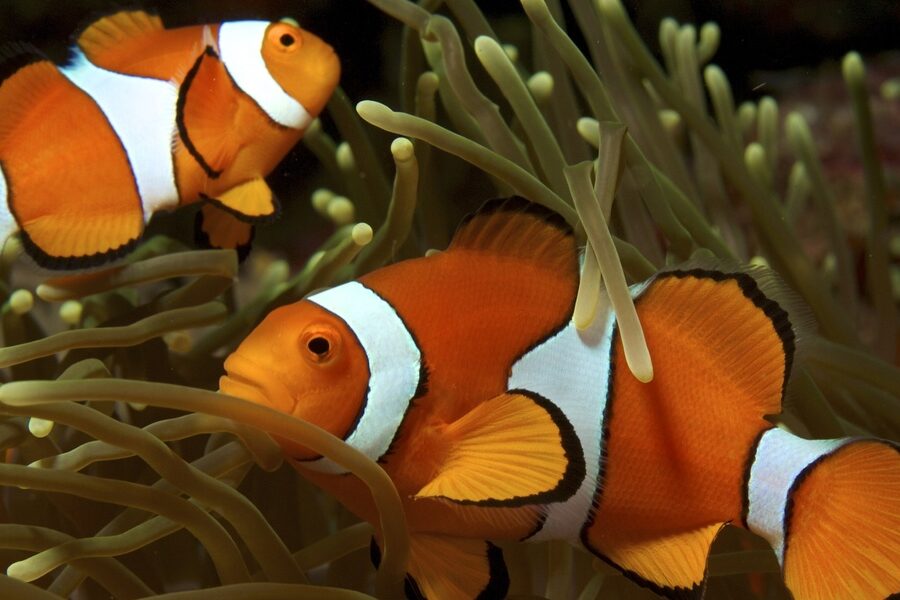Coastal seas, estuaries and river systems host a wide spectrum of whales, dolphins and porpoises that shape food webs and local cultures. Observing their habitats — from shallow mangroves to the open ocean — helps explain differences in size, behavior and conservation needs.
There are 61 Cetacean Examples, ranging from Amazon River Dolphin to Vaquita. For each entry you’ll find below the columns: Scientific name,Max length (m),Range / status — so you can scan taxonomy, typical adult size and distribution or conservation notes quickly.
How do I read the columns like Scientific name,Max length (m),Range / status?
Scientific name gives the Latin genus and species, Max length (m) is a typical adult size in meters, and Range / status summarizes where the animal is found and any conservation status or population notes; use that column to compare habitat and risk across species.
Which species on the list are most at risk and where can I learn more?
Some entries, such as the vaquita, are critically endangered while others have stable populations; the Range / status column flags threats and protection levels — for current conservation details check the listed status and refer to IUCN or regional conservation agencies for updates.
Cetacean Examples
| Common name | Scientific name | Max length (m) | Range / status |
|---|---|---|---|
| Blue Whale | Balaenoptera musculus | 30 | Global oceans; Endangered (EN). Once widespread, now recovering slowly. |
| Fin Whale | Balaenoptera physalus | 27 | Global oceans; Vulnerable (VU). Widespread but populations were heavily depleted by whaling. |
| Humpback Whale | Megaptera novaeangliae | 16 | Global oceans; Least Concern (LC). Most populations are secure and increasing. |
| Gray Whale | Eschrichtius robustus | 15 | North Pacific Ocean; Least Concern (LC). Atlantic population is extinct. |
| North Atlantic Right Whale | Eubalaena glacialis | 18 | North Atlantic coastal waters; Critically Endangered (CR). Fewer than 360 individuals remain. |
| Sperm Whale | Physeter macrocephalus | 20 | Global oceans; Vulnerable (VU). Commercial whaling severely reduced its numbers. |
| Killer Whale (Orca) | Orcinus orca | 9.8 | Global oceans; Data Deficient (DD), some populations are endangered. |
| Common Bottlenose Dolphin | Tursiops truncatus | 4 | Global temperate/tropical waters; Least Concern (LC). Abundant and widespread. |
| Spinner Dolphin | Stenella longirostris | 2.4 | Global tropical waters; Least Concern (LC). Populations are generally stable. |
| Beluga Whale | Delphinapterus leucas | 5.5 | Arctic and sub-Arctic waters; Least Concern (LC), but some stocks are threatened. |
| Narwhal | Monodon monoceros | 5 | Arctic waters; Least Concern (LC). Vulnerable to climate change. |
| Harbour Porpoise | Phocoena phocoena | 1.9 | Northern Hemisphere coastal waters; Least Concern (LC). Common but shy. |
| Vaquita | Phocoena sinus | 1.5 | Northern Gulf of California, Mexico; Critically Endangered (CR). On the brink of extinction. |
| Amazon River Dolphin | Inia geoffrensis | 2.8 | Amazon and Orinoco river basins; Endangered (EN). Threatened by habitat loss and pollution. |
| Cuvier’s Beaked Whale | Ziphius cavirostris | 7 | Global deep offshore waters; Least Concern (LC). Widespread and abundant. |
| Risso’s Dolphin | Grampus griseus | 4 | Global temperate and tropical waters; Least Concern (LC). Widely distributed. |
| Short-beaked Common Dolphin | Delphinus delphis | 2.6 | Global temperate/tropical waters; Least Concern (LC). One of the most abundant cetaceans. |
| False Killer Whale | Pseudorca crassidens | 6 | Global tropical and temperate waters; Near Threatened (NT). |
| Long-finned Pilot Whale | Globicephala melas | 7.6 | Global colder waters; Least Concern (LC). Abundant in its habitat. |
| Dall’s Porpoise | Phocoenoides dalli | 2.3 | North Pacific Ocean; Least Concern (LC). Locally abundant. |
| Irrawaddy Dolphin | Orcaella brevirostris | 2.7 | Southeast Asian coastal/river waters; Endangered (EN). Faces many threats. |
| Hector’s Dolphin | Cephalorhynchus hectori | 1.5 | Coastal New Zealand; Endangered (EN). One of the rarest marine dolphins. |
| Southern Right Whale | Eubalaena australis | 18 | Southern Hemisphere; Least Concern (LC). Populations are strongly recovering. |
| Bowhead Whale | Balaena mysticetus | 20 | Arctic waters; Least Concern (LC). Well-adapted to its icy environment. |
| Common Minke Whale | Balaenoptera acutorostrata | 10.5 | Global oceans; Least Concern (LC). One of the most common baleen whales. |
| Sei Whale | Balaenoptera borealis | 20 | Global oceans; Endangered (EN). Still recovering from commercial whaling. |
| Bryde’s Whale | Balaenoptera edeni | 15.5 | Global tropical/subtropical waters; Least Concern (LC). |
| Pygmy Right Whale | Caperea marginata | 6.5 | Southern Hemisphere; Least Concern (LC). Rarely sighted at sea. |
| Pygmy Sperm Whale | Kogia breviceps | 3.8 | Global tropical/temperate waters; Data Deficient (DD). Elusive and rarely seen. |
| Dwarf Sperm Whale | Kogia sima | 2.7 | Global tropical/temperate waters; Data Deficient (DD). |
| Baird’s Beaked Whale | Berardius bairdii | 13 | North Pacific Ocean; Least Concern (LC). Subject to some hunting. |
| Melon-headed Whale | Peponocephala electra | 2.7 | Global tropical waters; Least Concern (LC). Very social and gregarious. |
| Striped Dolphin | Stenella coeruleoalba | 2.6 | Global temperate/tropical waters; Least Concern (LC). Abundant and widespread. |
| La Plata Dolphin (Franciscana) | Pontoporia blainvillei | 1.8 | SE South American coastal waters; Vulnerable (VU). Threatened by fishing nets. |
| Northern Bottlenose Whale | Hyperoodon ampullatus | 9.8 | North Atlantic Ocean; Near Threatened (NT). Targeted by past whaling. |
| Blainville’s Beaked Whale | Mesoplodon densirostris | 4.7 | Global tropical/temperate waters; Least Concern (LC). |
| Pantropical Spotted Dolphin | Stenella attenuata | 2.6 | Global tropical oceans; Least Concern (LC). |
| Commerson’s Dolphin | Cephalorhynchus commersonii | 1.7 | South American/Kerguelen Is. coasts; Least Concern (LC). |
| Rough-toothed Dolphin | Steno bredanensis | 2.8 | Global deep tropical/warm waters; Least Concern (LC). |
| Southern Right Whale Dolphin | Lissodelphis peronii | 3 | Southern Hemisphere cool waters; Least Concern (LC). |
| Rice’s Whale | Balaenoptera ricei | 12.8 | Gulf of Mexico; Critically Endangered (CR). One of the rarest whales. |
| Ganges River Dolphin | Platanista gangetica | 2.6 | Ganges-Brahmaputra river systems; Endangered (EN). |
| Indus River Dolphin | Platanista minor | 2.5 | Indus River, Pakistan; Endangered (EN). |
| Atlantic Humpback Dolphin | Sousa teuszii | 2.8 | West African coastal waters; Critically Endangered (CR). |
| Tucuxi | Sotalia fluviatilis | 1.5 | Amazon River basin; Endangered (EN). |
| Guiana Dolphin | Sotalia guianensis | 2.2 | NE South American coastal waters; Near Threatened (NT). |
| Fraser’s Dolphin | Lagenodelphis hosei | 2.7 | Global deep tropical waters; Least Concern (LC). |
| Clymene Dolphin | Stenella clymene | 2 | Tropical Atlantic Ocean; Least Concern (LC). |
| Spectacled Porpoise | Phocoena dioptrica | 2.3 | Subantarctic waters; Least Concern (LC). |
| Heaviside’s Dolphin | Cephalorhynchus heavisidii | 1.7 | SW African coastal waters; Data Deficient (DD). |
| Australian Snubfin Dolphin | Orcaella heinsohni | 2.7 | Northern Australian coastal waters; Vulnerable (VU). |
| Indo-Pacific Bottlenose Dolphin | Tursiops aduncus | 2.7 | Indo-Pacific coastal waters; Near Threatened (NT). |
| Finless Porpoise | Neophocaena phocaenoides | 2.3 | Asian coastal/river waters; Vulnerable (VU). |
| Strap-toothed Whale | Mesoplodon layardii | 6.2 | Southern Hemisphere cold waters; Least Concern (LC). |
| Atlantic Spotted Dolphin | Stenella frontalis | 2.3 | Tropical/temperate Atlantic Ocean; Least Concern (LC). |
| Northern Right Whale Dolphin | Lissodelphis borealis | 3.1 | North Pacific Ocean; Least Concern (LC). |
| Long-beaked Common Dolphin | Delphinus capensis | 2.6 | Coastal temperate/tropical waters; Data Deficient (DD). |
| Burmeister’s Porpoise | Phocoena spinipinnis | 2 | South American coastal waters; Near Threatened (NT). |
| True’s Beaked Whale | Mesoplodon mirus | 5.3 | North Atlantic & Southern Hemisphere; Least Concern (LC). |
| Chilean Dolphin | Cephalorhynchus eutropia | 1.7 | Coastal Chile; Near Threatened (NT). |
| Indo-Pacific Humpback Dolphin | Sousa chinensis | 3.2 | SE Asian/Australian coastal waters; Vulnerable (VU). |
Images and Descriptions
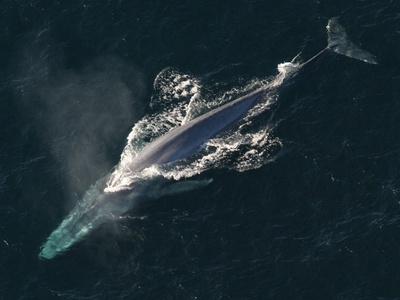
Blue Whale
The largest animal on Earth, recognized by its long, slender, mottled blue-gray body and a diet consisting almost exclusively of tiny krill. Its powerful vocalizations can travel for hundreds of miles underwater, used for communication across vast distances.
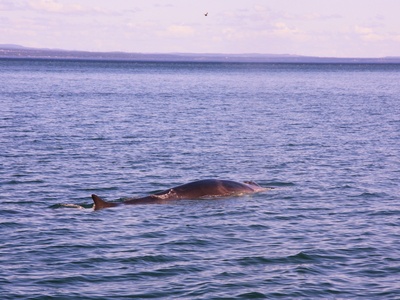
Fin Whale
Known as the “greyhound of the sea” for its incredible speed, it has a uniquely asymmetrical head with a white lower jaw on the right side and a dark one on the left. This sleek rorqual is the second-largest animal alive.
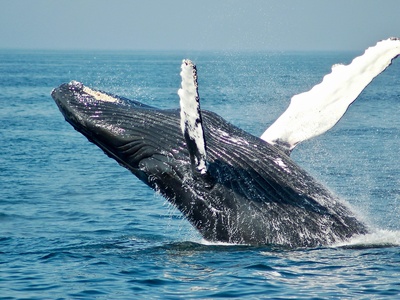
Humpback Whale
Famous for spectacular acrobatic breaches and complex, haunting songs sung by males during breeding season. They are easily identified by their long pectoral fins and knobby heads, undertaking massive annual migrations between feeding and breeding grounds.
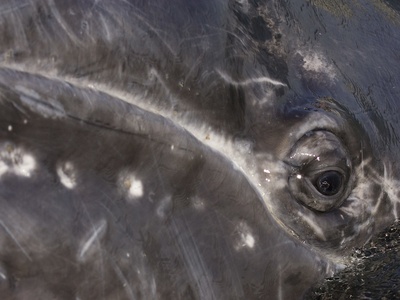
Gray Whale
Undertakes one of the longest annual migrations of any mammal, traveling up to 20,000 km round-trip between feeding grounds in the Arctic and calving lagoons in Mexico. They are bottom-feeders, scooping up sediment to filter out small crustaceans.
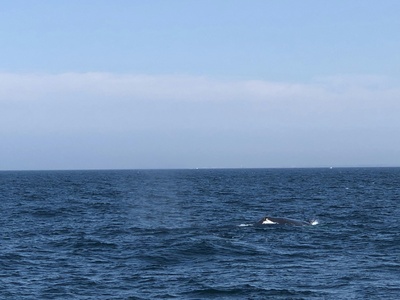
North Atlantic Right Whale
A slow-moving, stocky whale that lacks a dorsal fin and has distinctive patches of rough skin called callosities on its head. It is one of the most endangered large whales, primarily threatened by ship strikes and fishing gear entanglement.
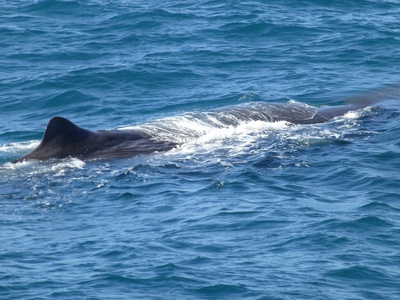
Sperm Whale
The largest toothed predator and deepest-diving mammal, capable of reaching depths of 2,250 meters. Its massive, block-shaped head contains the spermaceti organ, which is thought to aid in buoyancy control and echolocation.
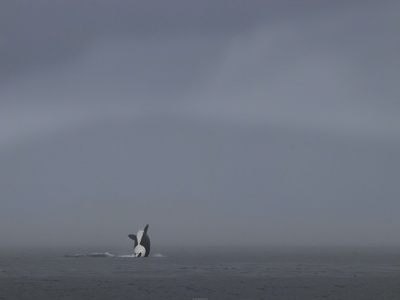
Killer Whale (Orca)
A highly intelligent apex predator with complex social structures and diverse hunting strategies. Different ecotypes specialize on specific prey, from fish to marine mammals, and they communicate with a wide range of calls and clicks unique to their pods.
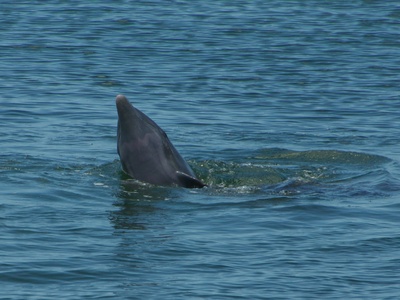
Common Bottlenose Dolphin
Perhaps the most familiar dolphin, known for its high intelligence, curiosity, and charismatic “smile.” They are highly adaptable, living in various habitats from coastal estuaries to the deep ocean, and use sophisticated cooperative hunting techniques.
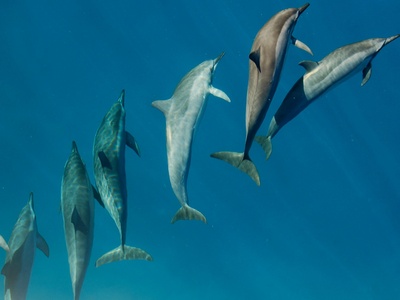
Spinner Dolphin
Named for its spectacular acrobatic displays where it leaps from the water and spins longitudinally up to seven times in a single jump. This behavior is thought to be used for communication, parasite removal, or simply for play.
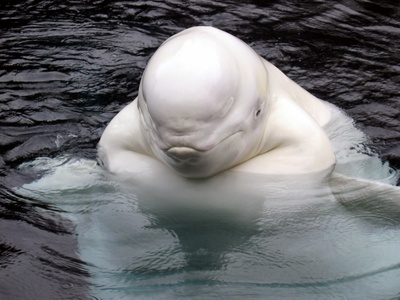
Beluga Whale
Known as the “canary of the sea” for its diverse and melodic vocalizations. This highly social, all-white whale has a flexible neck and a soft, bulbous forehead called a melon, which can change shape to focus sounds for echolocation.
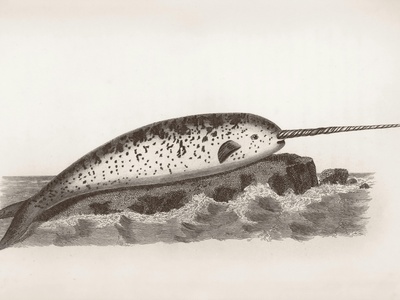
Narwhal
Often called the “unicorn of the sea,” male narwhals possess a remarkable long, spiraled tusk, which is an elongated canine tooth that can grow up to 3 meters long. The tusk is a sensory organ packed with nerve endings.
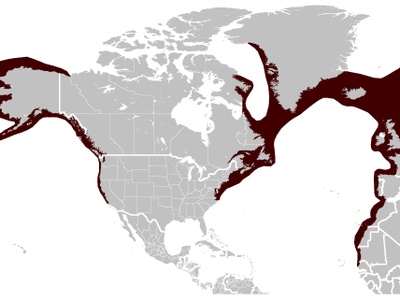
Harbour Porpoise
One of the smallest cetaceans, frequently seen in coastal areas, bays, and estuaries. They are typically found in small groups and are less acrobatic than dolphins, usually showing only their small, triangular dorsal fin as they surface to breathe.

Vaquita
The world’s smallest and most endangered cetacean, with possibly fewer than 10 individuals left. Its population has been decimated by entanglement in illegal gillnets set for totoaba fish. It is easily recognized by the dark rings around its eyes and lips.
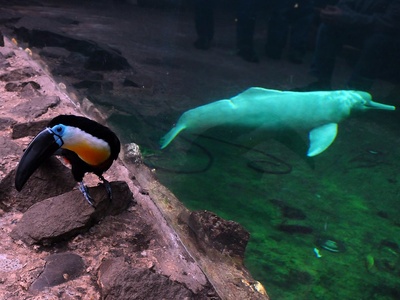
Amazon River Dolphin
Locally known as the “boto,” this freshwater dolphin has a long beak, a flexible neck, and can appear pink in color. It navigates murky river waters using advanced echolocation and is central to many South American myths and legends.
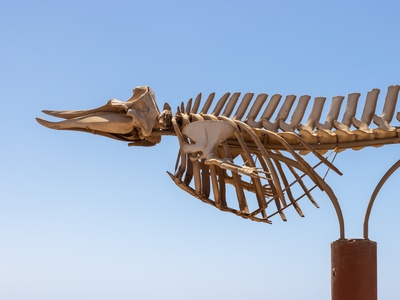
Cuvier’s Beaked Whale
This elusive animal holds the record for the deepest and longest dives of any mammal, plunging to nearly 3,000 meters for over three hours. It has a short beak and a pale head, and males have two small tusks.
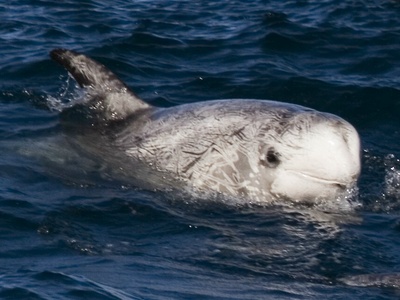
Risso’s Dolphin
Identified by its robust, pale body that becomes heavily scarred and scratched over time from interactions with other Risso’s dolphins and prey like squid. Calves are born dark gray and lighten with age as they accumulate these distinctive markings.
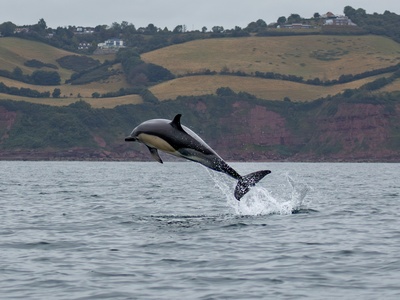
Short-beaked Common Dolphin
A highly energetic and social species, often seen traveling in enormous pods of thousands. They are easily recognized by the striking yellow and gray hourglass pattern on their sides and are famous for bow-riding on ships and large whales.
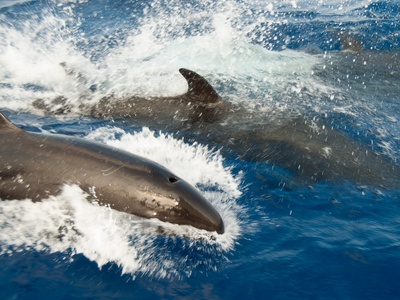
False Killer Whale
Despite its name, it is a large species of dolphin, not a whale. They are incredibly social, forming strong, long-term bonds within their pods and are known to share food. They sometimes strand in large groups.
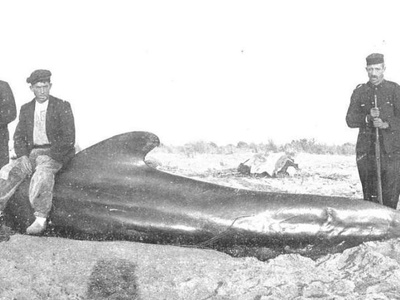
Long-finned Pilot Whale
A highly social species living in tight-knit matriarchal pods, named for its very long, sickle-shaped pectoral fins. It has a distinctive bulbous forehead (melon) and is known for its strong family bonds, which can unfortunately lead to mass strandings.
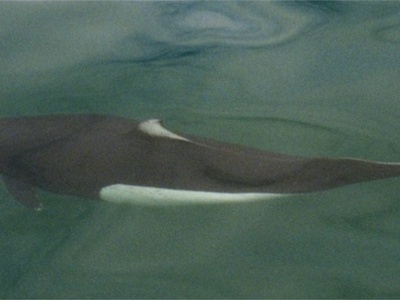
Dall’s Porpoise
One of the fastest small cetaceans, capable of speeds up to 55 km/h. Its stark black-and-white pattern is similar to a killer whale’s, and it creates a unique “rooster tail” splash when swimming at high speed.
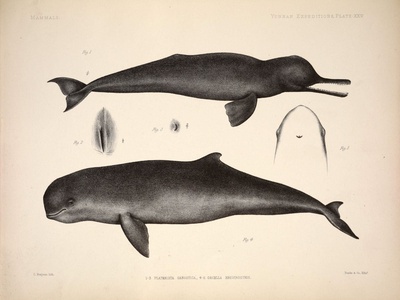
Irrawaddy Dolphin
Recognizable by its high, rounded forehead and lack of a distinct beak, giving it a smiling appearance. This unique dolphin inhabits both saltwater and freshwater systems and is known for cooperative fishing with local fishermen in some areas.
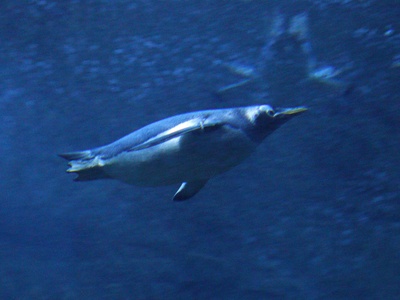
Hector’s Dolphin
The world’s smallest dolphin, easily identified by its unique rounded dorsal fin that resembles a Mickey Mouse ear. Its survival is threatened by entanglement in fishing nets, particularly in its limited coastal habitat around New Zealand’s South Island.
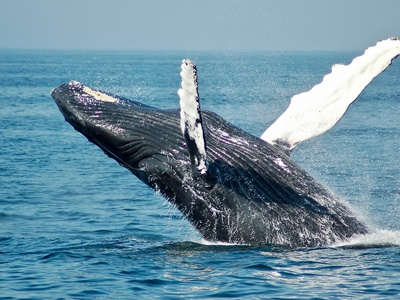
Southern Right Whale
Similar to its northern relatives but has fared much better since the end of whaling. Known for its V-shaped blow, lack of a dorsal fin, and callosities. They are often seen breaching and “sailing” with their flukes in the wind.
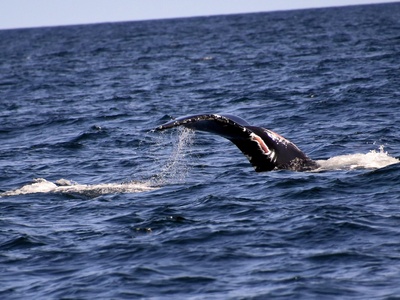
Bowhead Whale
Possesses the longest lifespan of any mammal, potentially exceeding 200 years. It has a massive, bow-shaped skull strong enough to break through thick sea ice and the longest baleen plates of any whale, used to filter tiny prey.
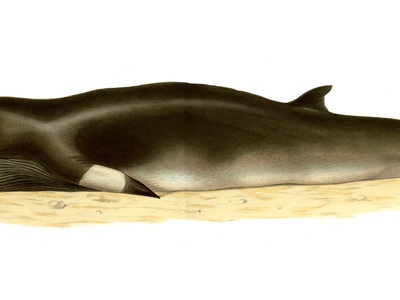
Common Minke Whale
One of the smallest rorquals, recognized by a distinctive white band on each flipper. They are often curious and may approach boats. Despite their abundance, they are still a target of commercial whaling in some countries.
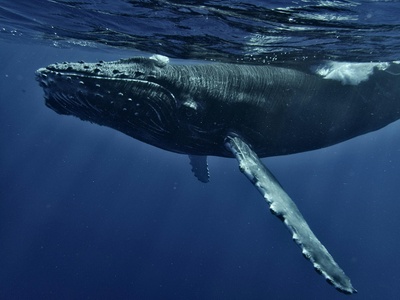
Sei Whale
One of the fastest whales, capable of short bursts over 50 km/h (31 mph). They are sleek, dark-gray rorquals that typically skim-feed near the surface, consuming copepods and krill, and often leave a series of “fluke prints” on the water.
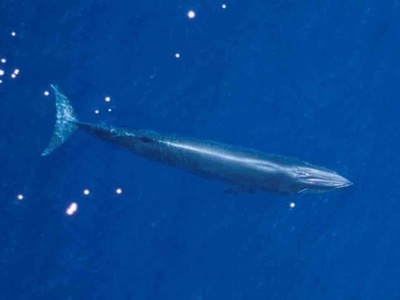
Bryde’s Whale
Uniquely identified by three prominent ridges on its head, whereas other rorquals have only one. This whale prefers warmer waters and often exhibits erratic, unpredictable movements while feeding on fish and krill near the surface.
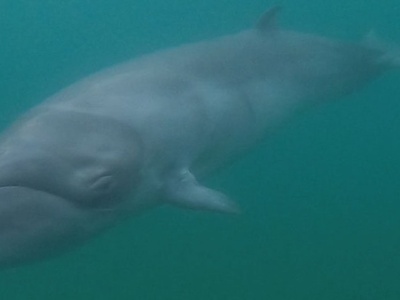
Pygmy Right Whale
The smallest and most enigmatic of the baleen whales. It has a distinctly arched jawline similar to right whales but is more closely related to rorquals. Its behavior and population size remain largely a mystery due to its elusive nature.
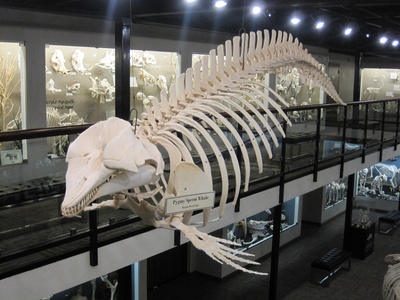
Pygmy Sperm Whale
A small, shy whale that resembles a shark due to its underslung jaw. When startled, it can eject a cloud of reddish-brown intestinal fluid to confuse predators, a defensive tactic similar to that of a squid.
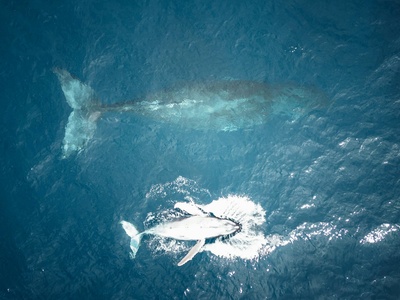
Dwarf Sperm Whale
Even smaller than its pygmy relative, this is one of the world’s smallest whale species. It is incredibly difficult to spot at sea, often lying motionless at the surface to bask. It shares the unique “ink-cloud” defense mechanism.
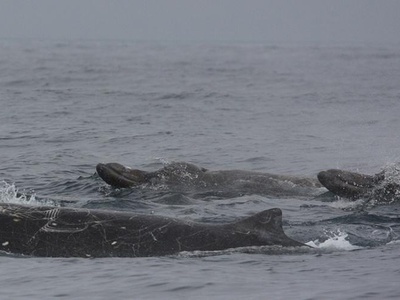
Baird’s Beaked Whale
The largest of the beaked whales, characterized by a long, dolphin-like beak and a prominent bulging forehead. They live in deep, offshore waters and travel in highly synchronized social pods of up to 30 individuals.
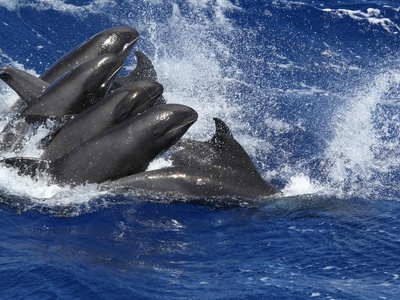
Melon-headed Whale
A small, fast-swimming cetacean that is technically a dolphin, named for its rounded, cone-shaped head. They often gather in huge, energetic pods of hundreds or even thousands and are known to associate with Fraser’s dolphins.
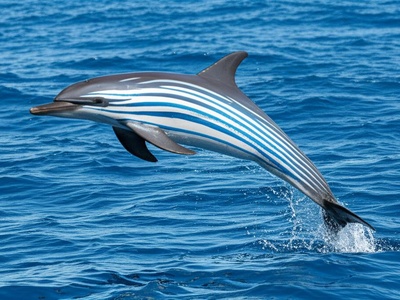
Striped Dolphin
Instantly recognizable by its stunning blue and white stripes running from the eye to the flipper and down its flanks. This species is a fast swimmer and an impressive leaper, often seen in large, active groups far from shore.
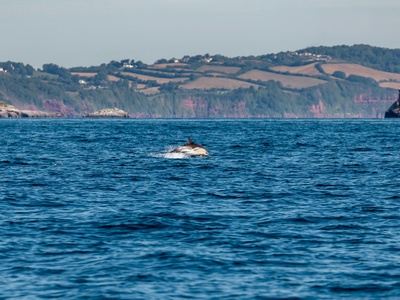
La Plata Dolphin (Franciscana)
The only member of the river dolphin group that inhabits saltwater estuaries and coastal ocean waters. It has an exceptionally long, slender beak and is one of the smallest and most threatened cetaceans in the South Atlantic.
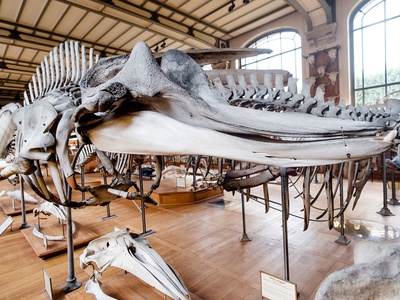
Northern Bottlenose Whale
A deep-diving beaked whale with a pronounced, bulbous forehead that becomes larger and flatter in older males. They are naturally curious and were historically easy targets for whalers as they would often approach ships.
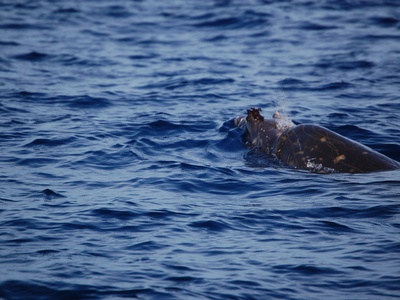
Blainville’s Beaked Whale
Possesses the densest bones of any known animal. Males have a peculiar, high-arching lower jaw with a large, erupted tusk on each side, which they use for fighting other males, resulting in extensive scarring.
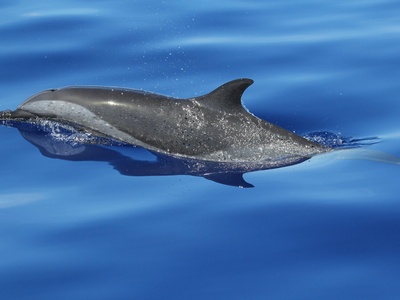
Pantropical Spotted Dolphin
This slender dolphin is born without spots but develops them with age, becoming heavily mottled as an adult. The species was severely impacted by the tuna fishing industry, where millions were killed as bycatch before dolphin-safe practices were adopted.
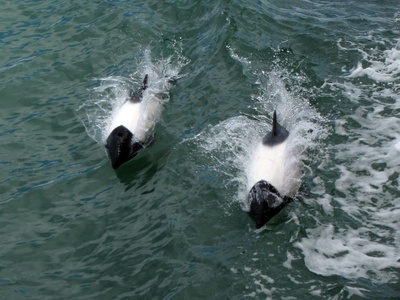
Commerson’s Dolphin
Nicknamed the “panda dolphin” or “skunk dolphin” for its striking black-and-white pattern. It is a highly active and playful species, often seen swimming upside-down and leaping from the water in coastal zones.
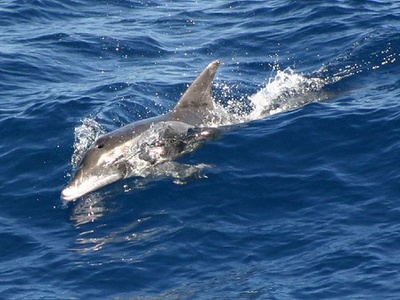
Rough-toothed Dolphin
Named for the fine vertical ridges on its teeth, which are unique among dolphins. It has a distinctive conical head that slopes smoothly into its beak, giving it a somewhat reptilian appearance. They are known to be intelligent and learn quickly.
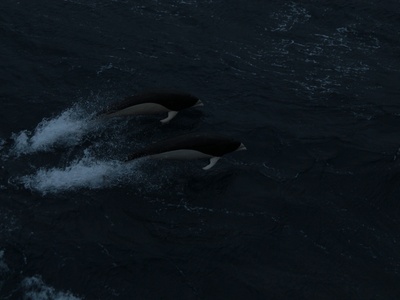
Southern Right Whale Dolphin
A sleek and graceful dolphin that is completely missing a dorsal fin, which gives it a smooth, torpedo-like appearance. Its stark black and white coloration and low, synchronized leaps make it a stunning sight in the open ocean.
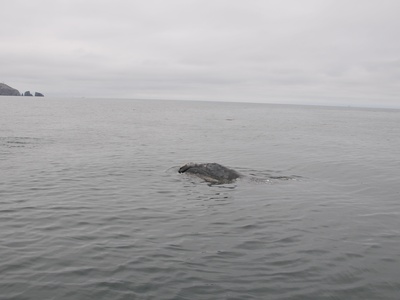
Rice’s Whale
Only recognized as a distinct species in 2021, this rorqual is one of the world’s most endangered marine mammals, with an estimated population of only about 50 individuals confined to the Gulf of Mexico.
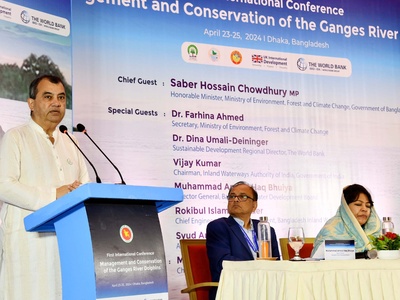
Ganges River Dolphin
This freshwater dolphin is functionally blind and navigates the murky river waters by swimming on its side while constantly emitting echolocation clicks. It has a very long, thin snout and a stocky body.
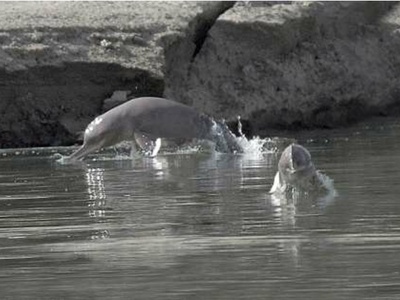
Indus River Dolphin
Closely related to the Ganges river dolphin, this functionally blind species is also a side-swimmer that relies on echolocation to hunt. Conservation efforts have helped stabilize its small population, which is isolated in the Indus River.
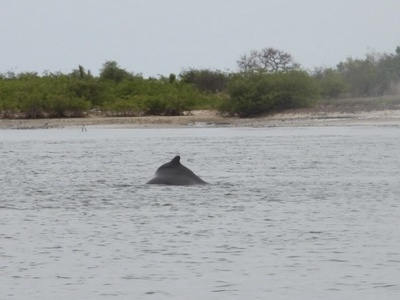
Atlantic Humpback Dolphin
The rarest of the humpback dolphins, found only along the Atlantic coast of Africa. It is characterized by a prominent fleshy hump at the base of its dorsal fin and faces extreme threats from bycatch and habitat destruction.
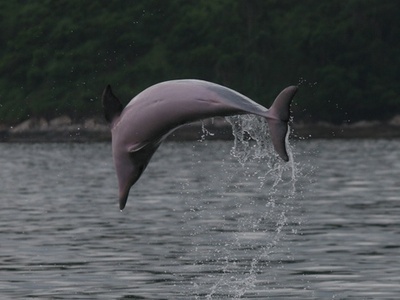
Tucuxi
A small freshwater dolphin that strongly resembles a miniature bottlenose dolphin. It is found throughout the Amazon river system, often in mixed groups with the larger, pink Amazon river dolphin (boto).
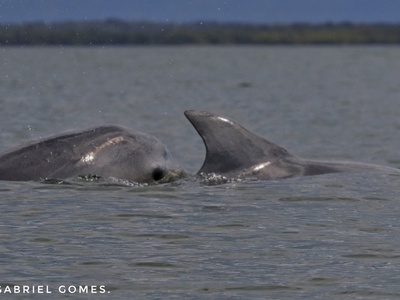
Guiana Dolphin
The saltwater cousin of the tucuxi, this species inhabits coastal and estuarine waters from Central America to southern Brazil. It is slightly larger than the tucuxi and often seen leaping near river mouths.
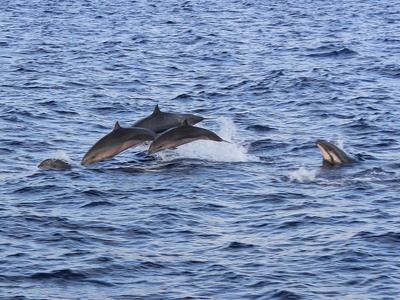
Fraser’s Dolphin
A robust dolphin with a short beak and small flippers. This species was only known from a single skeleton until the 1970s and is now known to form massive, fast-moving pods in deep offshore waters.
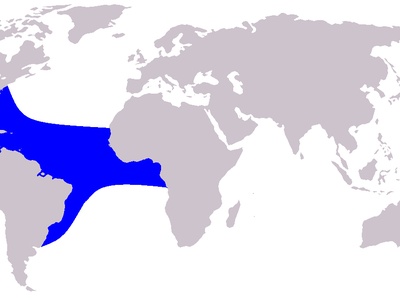
Clymene Dolphin
Nicknamed the “short-snouted spinner dolphin,” this species is thought to have originated as a natural hybrid between spinner and striped dolphins. It shares traits from both, including the spinning behavior and a three-part color pattern.

Spectacled Porpoise
A rarely seen porpoise named for the distinct black patches around its eyes, which contrast with its white underside. It has a large, rounded dorsal fin and is one of the most striking but poorly understood porpoises.
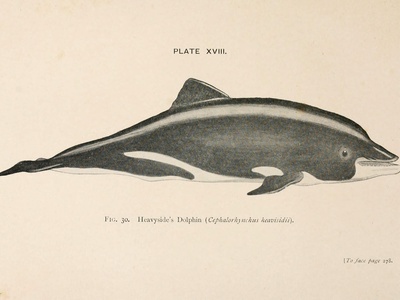
Heaviside’s Dolphin
A small, stocky dolphin with a blunt head and a triangular dorsal fin. Found only in the cold Benguela Current off Namibia and South Africa, it is known for its energetic behavior and acrobatic leaps.
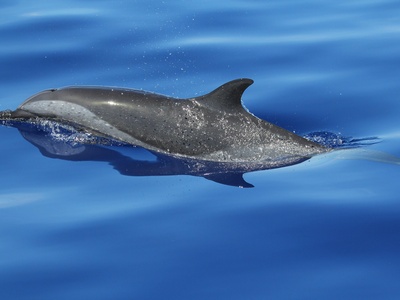
Australian Snubfin Dolphin
A close relative of the Irrawaddy dolphin, this species was only described in 2005. It has a similar rounded head and no beak but is tri-colored and has a small, “snubby” dorsal fin. It is known to spit jets of water while hunting.
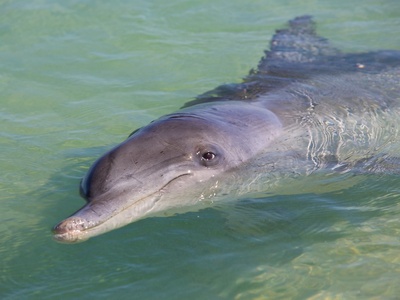
Indo-Pacific Bottlenose Dolphin
Distinguished from the common bottlenose dolphin by its more slender body, longer beak, and the presence of spots on the bellies of adults. It prefers shallower coastal habitats than its more widespread cousin.
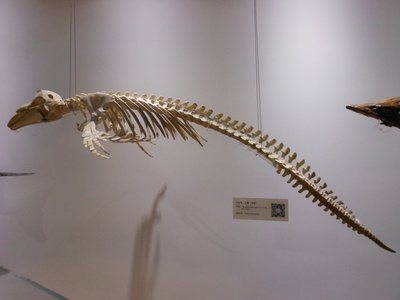
Finless Porpoise
Unique among porpoises for lacking a true dorsal fin, instead featuring a low dorsal ridge covered in small bumps. The freshwater Yangtze population is critically endangered and represents a distinct species to some authorities.
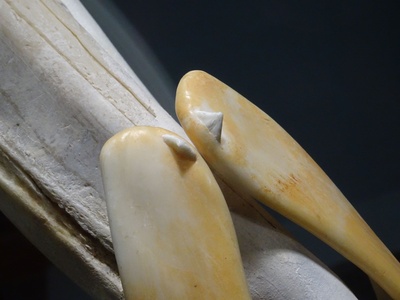
Strap-toothed Whale
Adult males of this species have the most bizarre teeth of any mammal. Two large, strap-like tusks erupt from the lower jaw and grow up and over the beak, preventing the whale from opening its mouth more than a few centimeters.
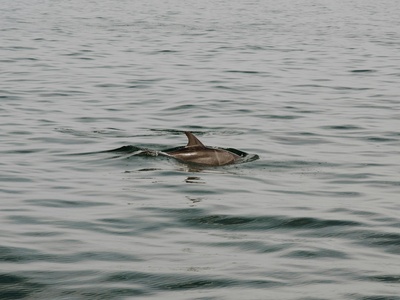
Atlantic Spotted Dolphin
Born a uniform gray, this dolphin develops its namesake spots as it ages, eventually becoming heavily mottled. They are active, social animals that often form large pods and frequently leap from the water.
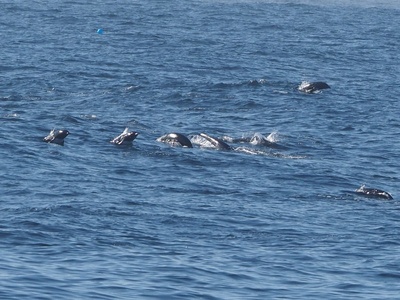
Northern Right Whale Dolphin
Like its southern counterpart, this slender dolphin has no dorsal fin. It is known for its high-speed travel in large, tightly-packed pods, often moving in a series of long, low, graceful leaps.
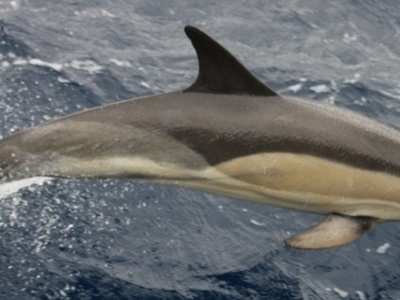
Long-beaked Common Dolphin
Very similar to the short-beaked species but has a noticeably longer and more slender beak. It tends to prefer shallower, warmer coastal waters and has a slightly more muted version of the classic hourglass color pattern.
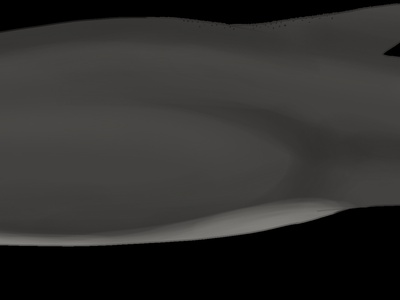
Burmeister’s Porpoise
A shy and elusive porpoise, it is distinguished by a unique dorsal fin that is located far back on its body and has small bumps called tubercles along its leading edge. It is under threat from bycatch in fishing nets.
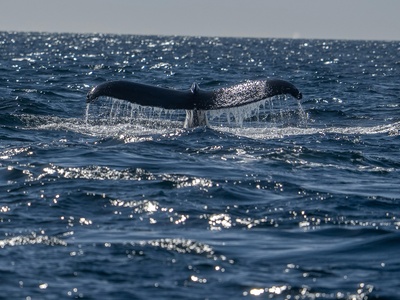
True’s Beaked Whale
This deep-diving whale has a moderately long beak and a small, bulbous melon. Interestingly, it has two completely separate populations in the Northern and Southern Hemispheres that do not interbreed.
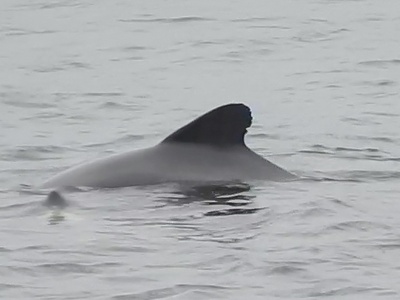
Chilean Dolphin
A small, stocky dolphin with a blunt head and rounded flippers, found exclusively in the cold, coastal waters of Chile. It is one of the least-known dolphin species due to its shy nature and limited range.
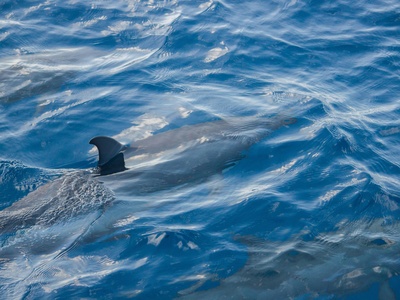
Indo-Pacific Humpback Dolphin
Famous for its coloration, which can be pink or white in some populations, particularly around Hong Kong. Like other humpback dolphins, it has a thick hump under its dorsal fin and prefers shallow, coastal habitats.
